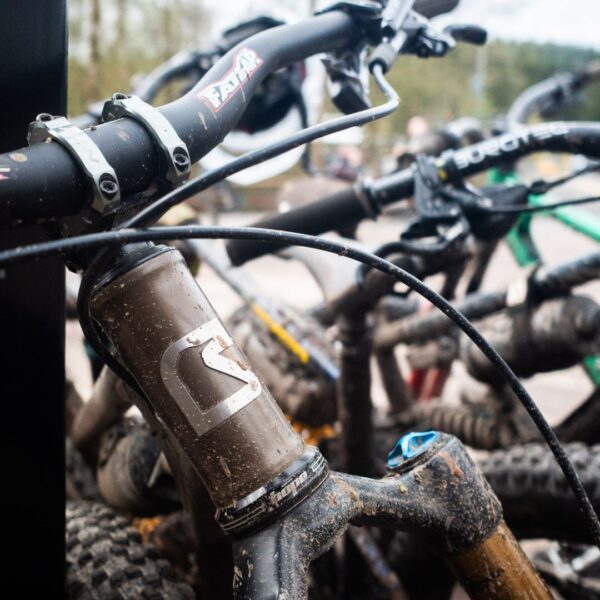
The Starling Cycles Roost is our stainless steel, do-it-all hardtail mountain bike frame. Mullet wheels, stainless steel frame, boost and non-boost compatible, room for 2.8″ tyres and compatibility with 120mm to 160mm forks. And, of course, it’s beautiful and shiny.
The Starling Roost does however have a unique feature that you won’t find on any other hardtail mountain bike. A unique, Starling-designed, proprietary chainstay yoke.
Here’s Joe’s explanation of what that chainstay yoke is and why we’ve made it.
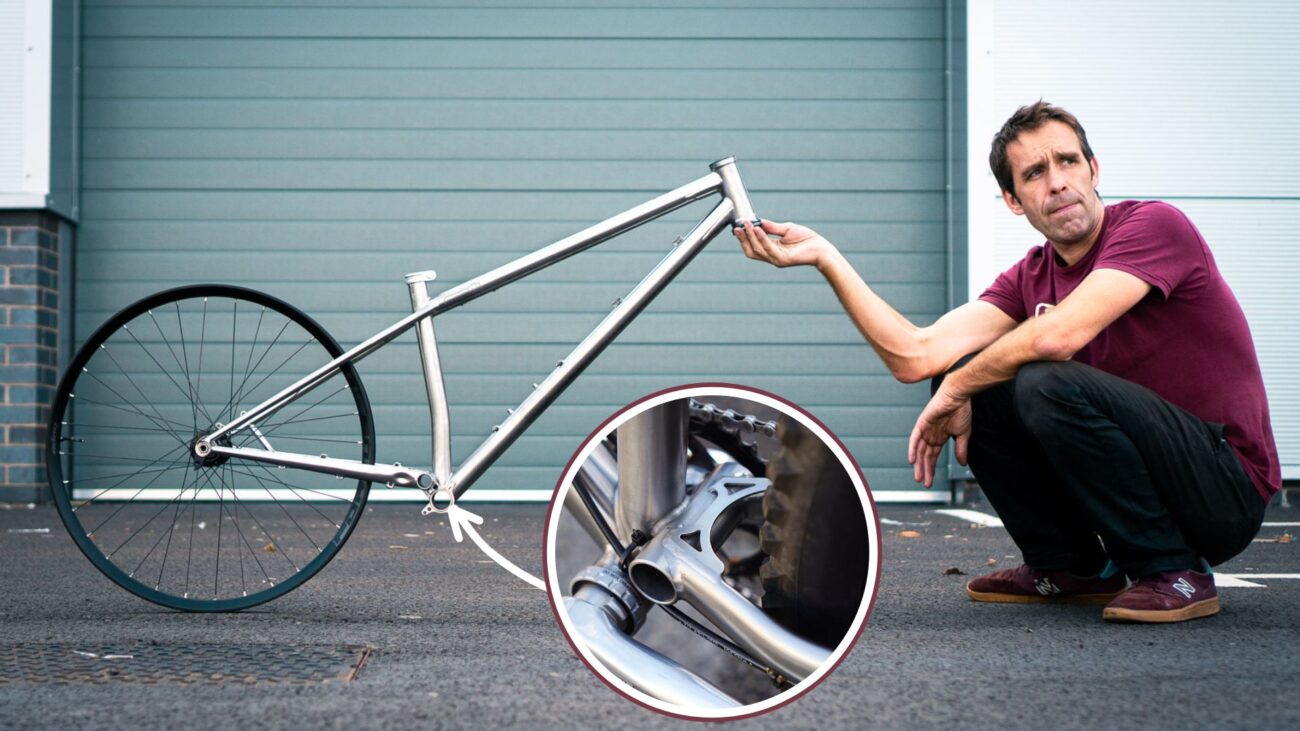
The bottom bracket/chainstay/chainring region of any hardtail mountain bike is always a tricky region to design a solution for.
Large tyres, chainring position and the desire for a short chainstay length mean that the clearance available for the chainstays to fit is small. There are a multitude of different solutions used by hardtail mountain bike companies: from simple sheet metal plates to complex machining.
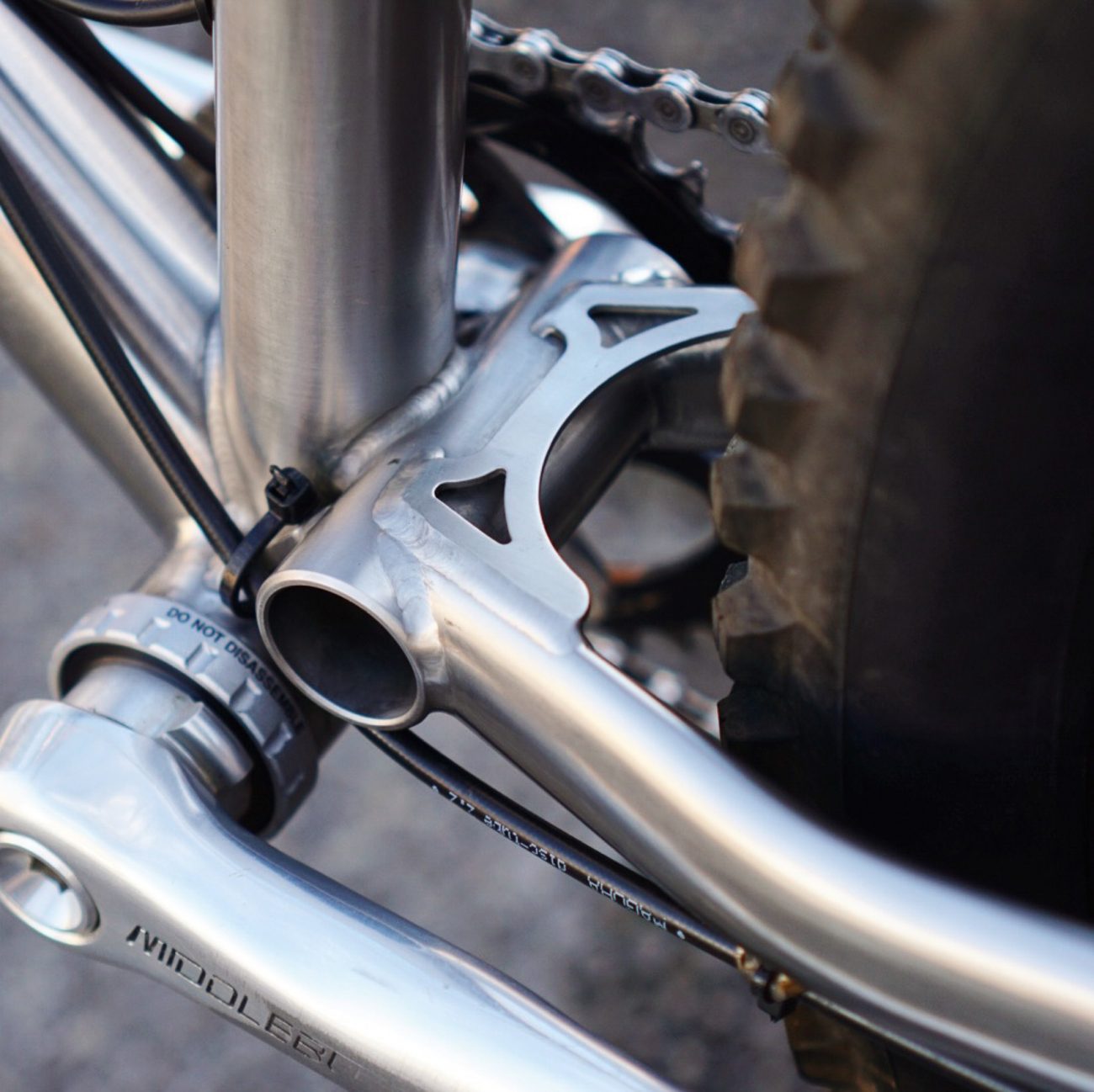
(Image above – the chainstay yoke design on the Starling Cycles Roost)
In designing the Starling Cycles Roost I spent a long time looking at existing solutions and none seemed elegant to me. They all seemed to be fitting something that was either too thin or overly complex.
But the answer was staring me in the face. The Starling Cycles Murmur, MegaMurmur, Roost and Twist full suspension bikes solve this problem very easily.
Our steel full-suspension mountain bikes use a simple tubular yoke that joins the chainstays. In the case of the full-suspension Starling Cycles bikes, the yoke is then joined to the machined main pivot parts.
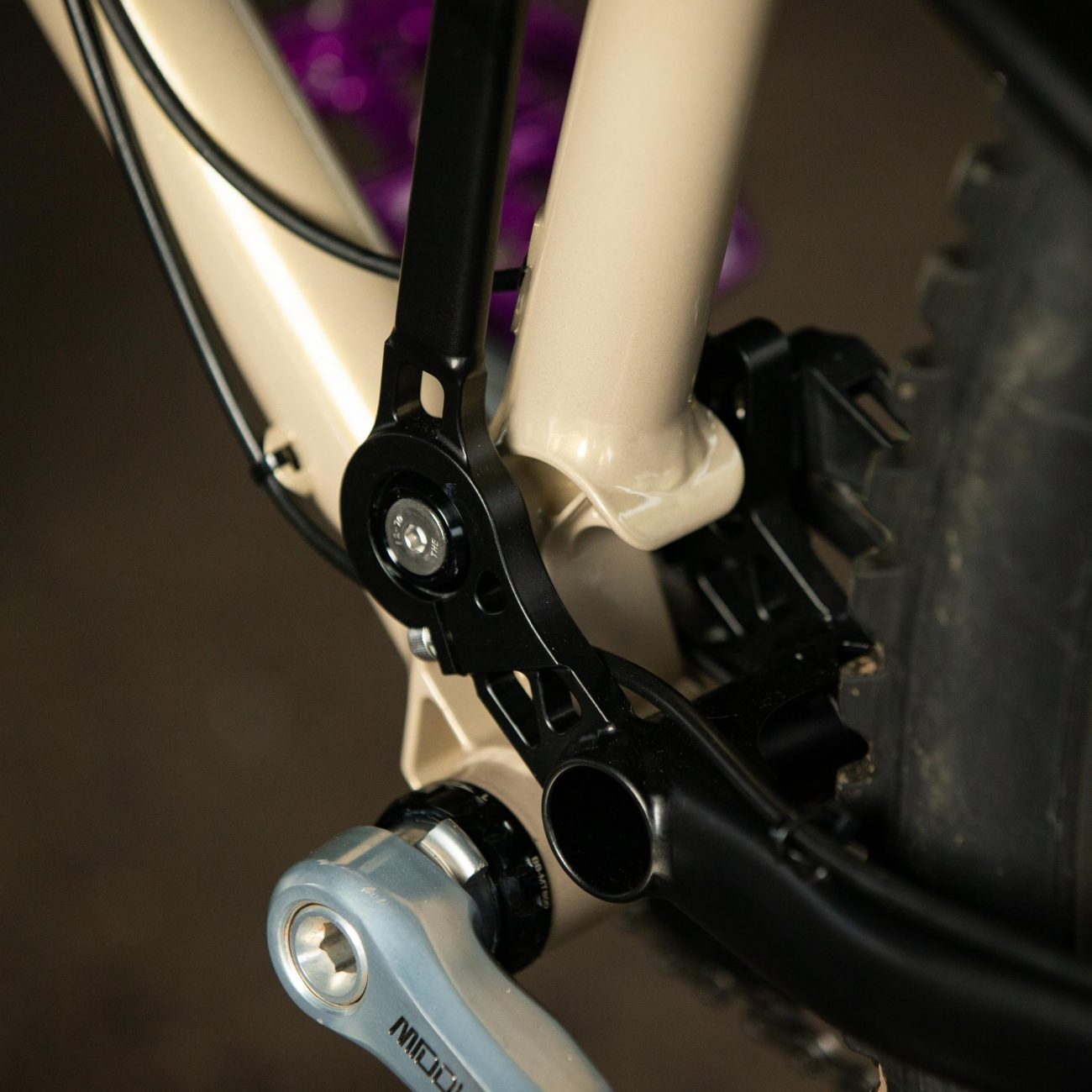
(Image above – the chainstay yoke design on our V3 full suspension frames)
But for the hardtail it’s just as easy to use two small machined parts that joint to the bottom bracket. And since the yoke doesn’t need to move, we can add further strength and rigidity by mitring and welding to the seat tube.
What we end up with on the Starling Roost is a strong, stiff, elegant solution. It might be different to everything else out there but it works and works well.
And, I think that making something unique is good. Why just look like every other hardtail mountain bike?
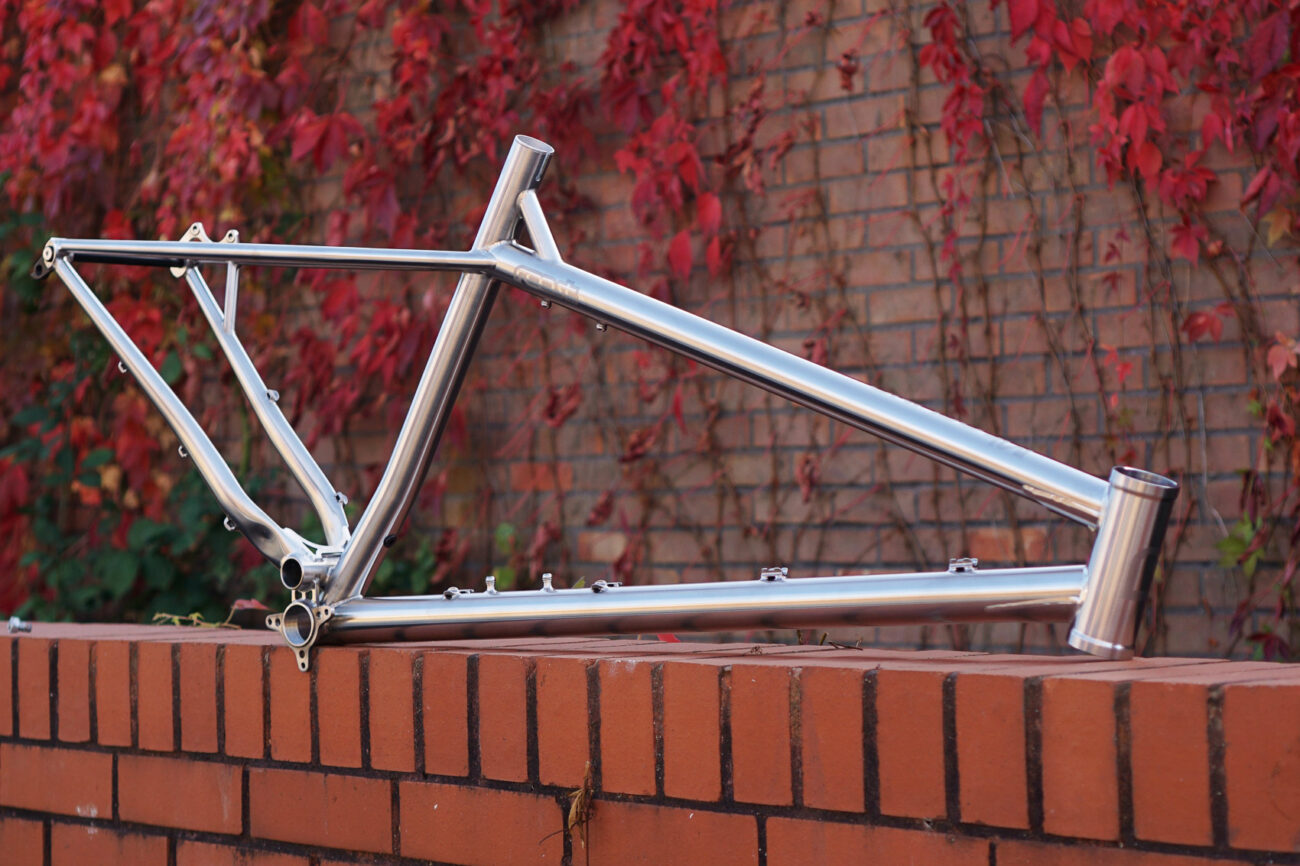
It also has the added benefit of keeping some visual similarity to the Starling full-suspension mountain bikes. I actually really like the aesthetics of the slightly raised chainstays and heaps of people who see it in person agree.
The design does result in a slightly higher chainstay than other configurations. But this has never been a problem with the full-suspension bikes, so no issue here! You can even run a 28t chainring.
“But what about chainslap?!” you all shout.
Well again, its been no issue on the full-sus bikes, which are silent on the trails. In my mind, having the chain closer to the chainstay means there’s less energy in the chain when it makes an impact, so less noise. But, this is a moot point as with some good quality chainstay protection (3M 2228 tape, or VHS tape work well), it’s just not an issue.
So that’s what’s up with the Starling Cycles Roost chainstay yoke.
It’s not like everyone else’s design, and it works and works well.
You can learn more about the Starling Cycles Roost hardtail mountain bike right here.
Enjoyed reading this? There’s more like this on the Starling Cycles Technical Journal.
Some Tech Journals you might like:
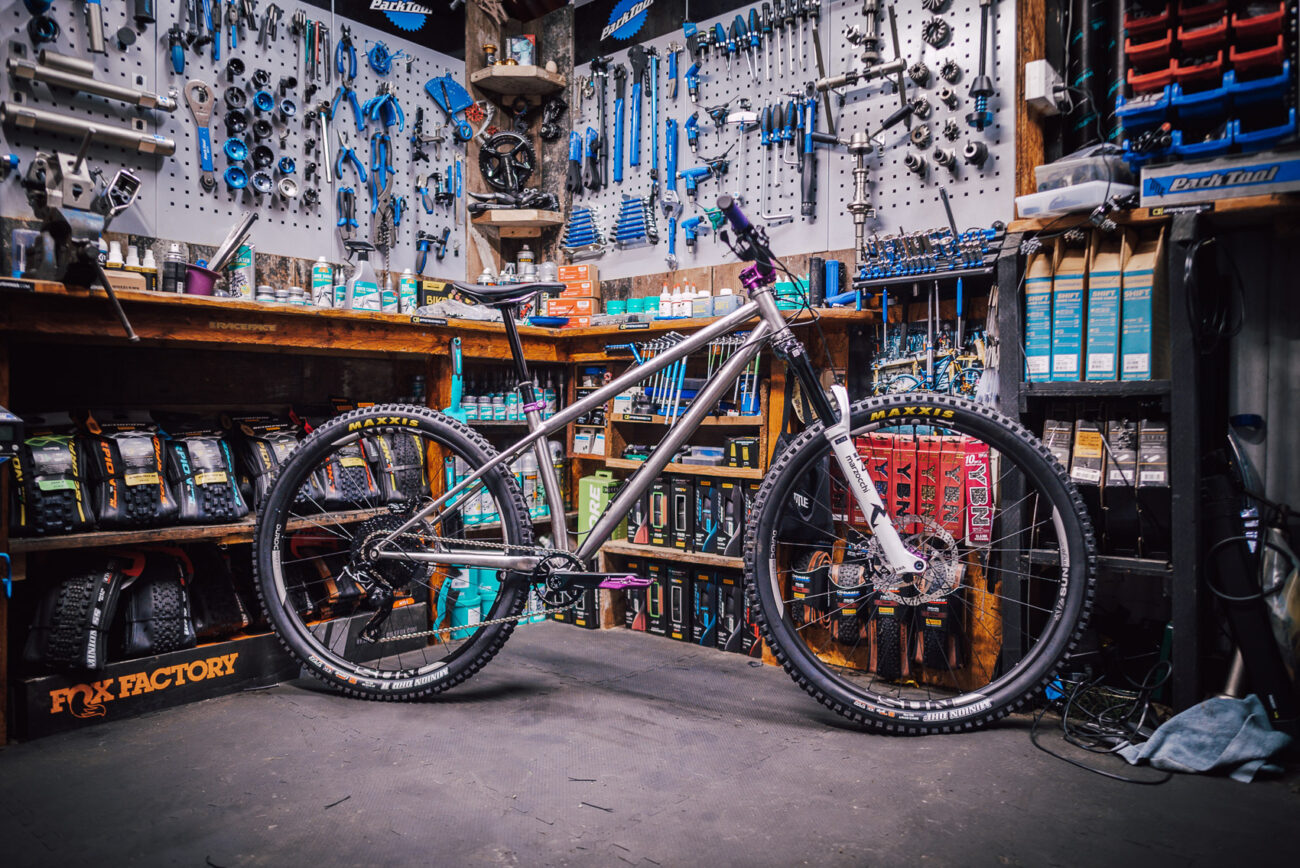
Ex-aerospace engineer Joe Mcewan is the founder and chief engineer of Starling Cycles. Passionate, outspoken and fond of a cuppa and a debate, Joe loves to challenge the established thinking of the industry.